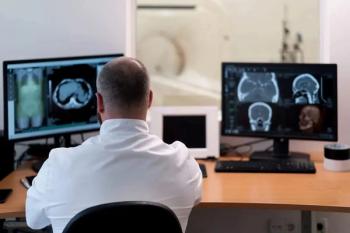
Sometimes, You Have to Get Loud
Why volume shouldn’t get in the way of learning.
Pretty much anybody who goes through a standard medical education and post-graduate training is going to wind up with memorable tales to tell. Times of particular success, stress, humor, you name it.
Because their context would only be known to others who’ve gone through similar education/training, oftentimes they only get brought out of mothballs when one is newly encountering fellow physicians, such as joining a new practice or welcoming a new member into one’s own. If you try to shoehorn one of these stories into conversation with a non-medical person, they don’t always “get it.”
I consider most-if not all-of my stories of erstwhile preceptors and attendings to be respectful, if not loving, testaments to these folks who made my transformation into a physician possible, even if none of them will ever know that there’s still at least one doc running around out there who remembers and appreciates what they did. Or if they’d be particularly flattered (“All the time we spent together, and that’s what stuck with you?!??”). Just in case, I won’t be using names for today’s recollection.
Doc A was an attending during my clinical rotation in anesthesiology. The guy could have been a Shakespearean actor-had a real presence about him, and when he wanted he could project quite a booming voice. Great sense of humor, however, and very down to earth.
Related article:
Each morning, before any clinical work began for the day, he’d have the house-staff on his rotation show up for informal academic sessions in a little classroom not far from the ORs. Early as it was, the overworked housestaff would barely be conscious, which didn’t always gibe well with Doc A’s particular teaching method.
One cold, dark morning, his chosen topic was patient positioning. That is, not all surgeries are performed with a patient lying supine, and the anesthesiologist needs to account for this. As he tried to engage the residents with leading questions about the sorts of thing one might need to consider when dealing with a prone or decubitus patient on the operating-table, he received few coherent answers.
He progressively simplified the questions he was asking. No takers (we medstudents who had showed up didn’t know if it was our place to upstage the residents, so we kept quiet). Eventually, he provided a focus: The lungs. Did patient-positioning have any ramifications for pulmonary function?
Still, no responses. Rolling his eyes a bit, he gave the ultimate softball-question to move things along: Were the two lungs the same as one another?
God knows why, one of the residents mumbled, “Yes.”
Maybe Doc A finally lost his patience, or maybe he figured this would be the best way to wake the rezzies up and make them pay attention: He pounded both of his fists on the desk in front of him, bellowing, “THEY’RE NOT THE SAME!” And launched into a good ol’ fashioned teaching-attending tirade.
I don’t know what else the residents might have learned from that session, but I’m pretty sure that none of them ever again took the asymmetry of the lungs for granted. I’d like to imagine that, at least for awhile, they also took those early-morning sessions a little more seriously.
It’s been (shudder) over 20 years since I started prowling around hospitals as a physician. I’ve seen all kinds of personalities in our field. A few are not at all shy about getting loud-whether that means shouting, using strong language, or taking assertive actions. For whatever reason, it seems that this behavior is more common in the specialties that do “hands-on” procedures, surgical or otherwise.
Most docs are on the quieter side, however. Indeed, it’s been my experience that too many physicians are too quiet. Maybe out of a sense that it’s unprofessional to even appear to lose one’s cool, and/or that patients and their families might be disturbed to see docs, even unrelated to their own care, showing human reactions to frustrating situations.
The problem with that: Excessive tranquility doesn’t always get the important things done. Some situations warrant, even cry out for, witnesses and participants to stand up and say, “Hey, this isn’t right!” And sometimes such an exclamation needs to be good and loud, perhaps even repeated, for it to get taken seriously.
Newsletter
Stay at the forefront of radiology with the Diagnostic Imaging newsletter, delivering the latest news, clinical insights, and imaging advancements for today’s radiologists.




























